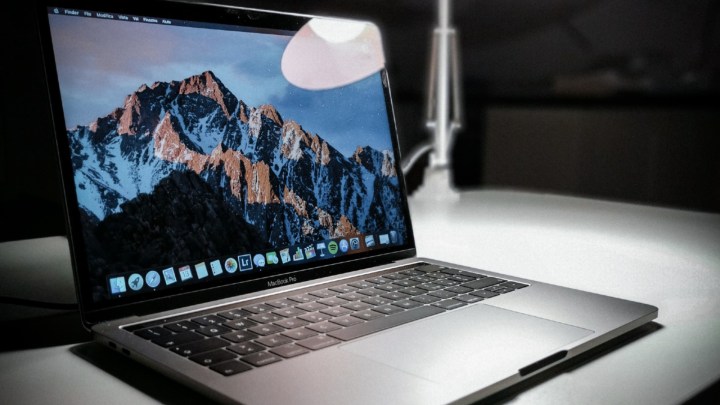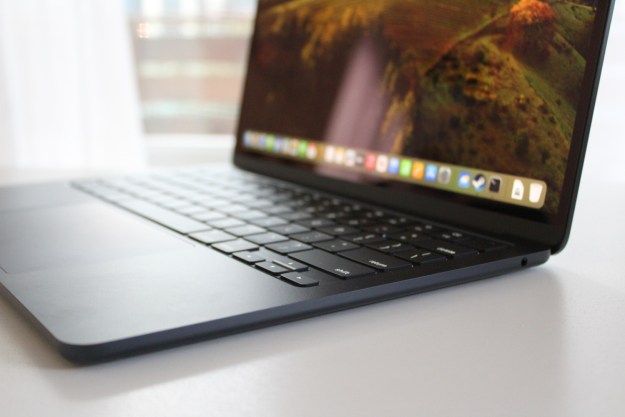Apple’s M2 chip found in the 13-inch MacBook Pro might struggle under pressure, found Vadim Yuryev of Max Tech on YouTube. The YouTuber tested the new MacBook Pro in order to see how it deals with extremely resource-heavy tasks.
This resulted in severe throttling upon hitting high temperatures, highlighting that Apple’s design choices for the laptop might not be ideal in terms of cooling. But is this really a big deal for the intended userbase of the new MacBook Pro?
We discovered SEVERE thermal throttling with Apple's new M2 MacBook Pro, proving that it needs a BETTER cooling system with two fans instead of one.
We exported 8K Canon RAW and saw temps hit 108°C, more than we've ever seen on a Mac, even an Intel Mac.
But it gets worse…
1/7 pic.twitter.com/JFCN7qJQbf— Vadim Yuryev (@VadimYuryev) June 29, 2022
It seems that Max Tech managed to find where the limits lie for Apple’s new M2-based 13-inch MacBook Pro. During a stress test, the notebook consistently hit temperatures as high as 108 degrees Celsius, resulting in severe processor throttling and, as a result, a drastic drop in performance. According to Yuryev, that’s a higher temperature than the YouTube channel had ever seen on a Mac, including Intel Macs.
Thermal throttling can be a problem in laptops and PCs alike when (among other reasons) the cooling is just not adequate for the task at hand. That’s precisely why the M2 MacBook Pro might be in a bit of trouble — it only has one fan as opposed to the two found in the M1 MacBook Pro, as showcased in a different Max Tech video. In this test, the single fan proves to be inadequate for the workload the M2 MacBook Pro was faced with — and that’s despite running at the maximum speed of 7200RPM the whole time.
Yuryev reported that in a split second, the clock speeds on the M2 would drop from 3200MHz to 1894MHz on the performance cores and from 2228MHz to 1444MHz on the efficiency cores. The GPU cores saw a staggering drop, too, declining from 1393MHz to 289MHz. This brought the package power down from 29.46 watts to just 7.31 watts. As Yuryev notes, this happened in waves: The performance would drop along with the temperature, and when the MacBook Pro was able to stabilize at 84 degrees Celsius, it started ramping up the clock speeds all over again.
It’s certainly worrying to see the M2 MacBook Pro struggle to keep things cool, and such significant drops in clock speeds are not to be ignored. However, Max Tech’s workload of choice also can’t be overlooked — the YouTuber used the 13-inch MacBook Pro for exporting 8K RAW footage. Yuryev himself admits that this is the most resource-heavy test Max Tech uses to test the true limits of a computer. The question is, just how often are users going to try to do the same on a $1,299 notebook? Probably not very often.

Even though most users won’t require that kind of power from their new 13-inch MacBook Pro, it’s still bothersome that it can heat up to 108 degrees Celsius and that this results in severe throttling. Whether you should buy it largely depends on the kind of workloads you’re planning to engage in. It can probably handle all manner of computing, but as shown by the test, the extremes appear to be reserved for high-end Macs.
Apple’s recently released 13-inch MacBook Pro is the only device that’s currently out and sporting the M2 chip. The company also has a MacBook Air in the works, but the pre-orders have yet to be opened. That device is rumored to not have a fan at all, so the throttling issues might carry over to the upcoming M2 MacBook Air.
As for the M2 MacBook Pro, it seems to be having a bit of a rough start. Some reports pointed toward poor performance in various multitasking apps that are on the resource-heavy side, such as Photoshop, Final Cut Pro, and Lightroom. Other sources, including Max Tech, reported that the read and write speeds on the SSD in the 256GB version of the M2 MacBook Pro are much worse than those of its M1 predecessor. However, this problem only seems to apply to the entry-level version, and users who choose the option with more storage don’t suffer from this issue. It’s most likely linked to the fact that when all of the 8GB of Apple Unified memory has been used up, the M2 MacBook Pro dips into the 256GB reserve on the SSD and uses it as virtual memory.
Given the relatively warm reception of the 14-inch and 16-inch MacBook Pros, it’s a shame to see that the more budget-friendly version doesn’t fare quite as well. However, as Apple unveils more versions of the M2 chip (and that will likely happen soon enough), we might be more impressed by the devices that follow rather than the MacBook Pro that debuted the M2.
Editors' Recommendations
- MacBook Pro 16 vs. MacBook Pro 14: The important differences
- If you buy one MacBook Air alternative, make it this one
- The case for buying the M2 MacBook Air over the M3 model
- Which color MacBook should you buy? Here’s how to pick
- Why you should buy a MacBook Air instead of a MacBook Pro




